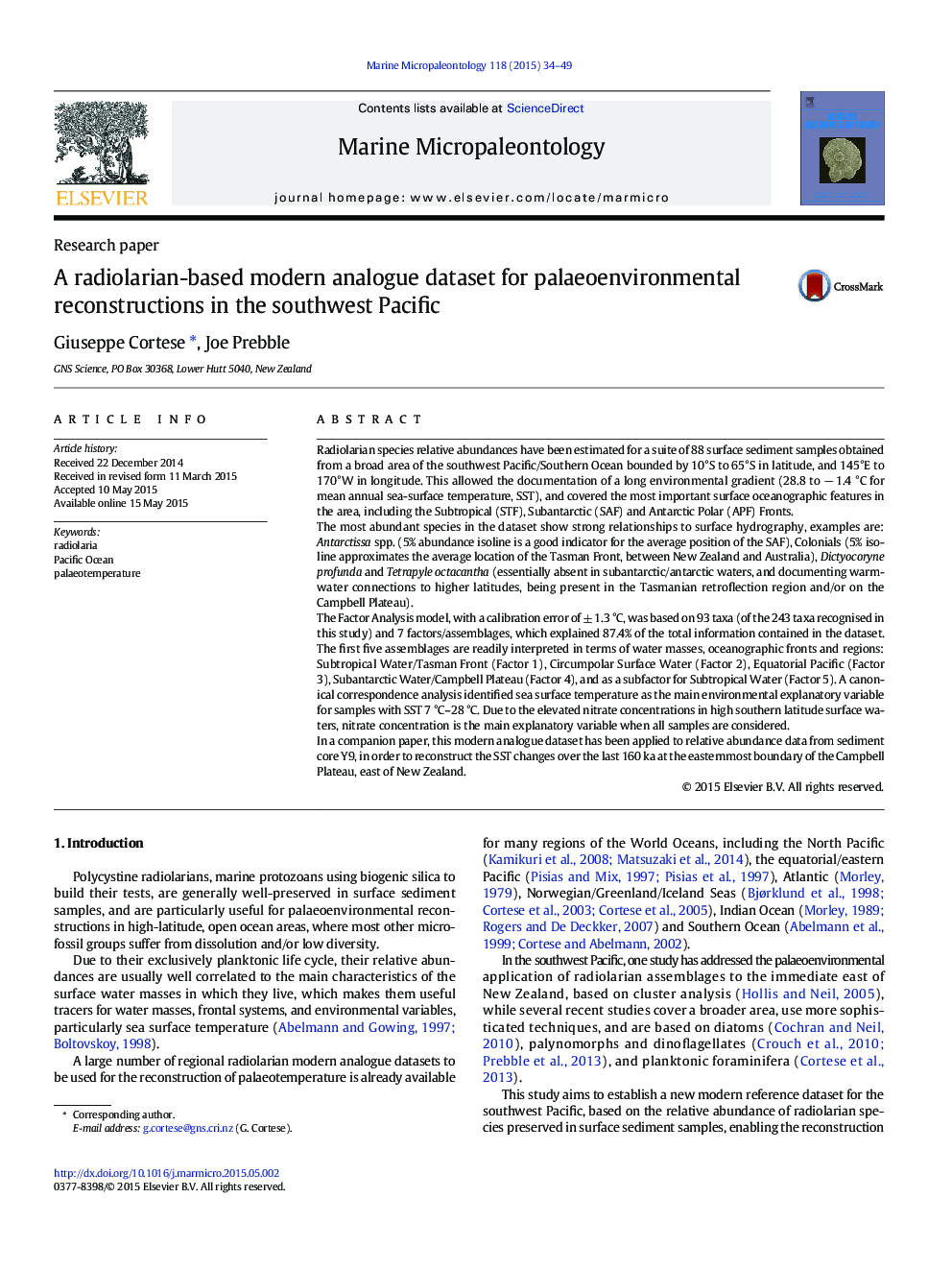| Article ID | Journal | Published Year | Pages | File Type |
|---|---|---|---|---|
| 4748802 | Marine Micropaleontology | 2015 | 16 Pages |
•New radiolarian census dataset for the modern southwest Pacific/Southern Ocean•CCA identifies sea surface temperature as main environmental explanatory variable.•Factor Analysis model, calibration error of ± 1.3 °C, is based on 93 taxa/7 factors.•Assemblages are readily interpreted in terms of water masses, oceanographic fronts.
Radiolarian species relative abundances have been estimated for a suite of 88 surface sediment samples obtained from a broad area of the southwest Pacific/Southern Ocean bounded by 10°S to 65°S in latitude, and 145°E to 170°W in longitude. This allowed the documentation of a long environmental gradient (28.8 to − 1.4 °C for mean annual sea-surface temperature, SST), and covered the most important surface oceanographic features in the area, including the Subtropical (STF), Subantarctic (SAF) and Antarctic Polar (APF) Fronts.The most abundant species in the dataset show strong relationships to surface hydrography, examples are: Antarctissa spp. (5% abundance isoline is a good indicator for the average position of the SAF), Colonials (5% isoline approximates the average location of the Tasman Front, between New Zealand and Australia), Dictyocoryne profunda and Tetrapyle octacantha (essentially absent in subantarctic/antarctic waters, and documenting warm-water connections to higher latitudes, being present in the Tasmanian retroflection region and/or on the Campbell Plateau).The Factor Analysis model, with a calibration error of ± 1.3 °C, was based on 93 taxa (of the 243 taxa recognised in this study) and 7 factors/assemblages, which explained 87.4% of the total information contained in the dataset. The first five assemblages are readily interpreted in terms of water masses, oceanographic fronts and regions: Subtropical Water/Tasman Front (Factor 1), Circumpolar Surface Water (Factor 2), Equatorial Pacific (Factor 3), Subantarctic Water/Campbell Plateau (Factor 4), and as a subfactor for Subtropical Water (Factor 5). A canonical correspondence analysis identified sea surface temperature as the main environmental explanatory variable for samples with SST 7 °C–28 °C. Due to the elevated nitrate concentrations in high southern latitude surface waters, nitrate concentration is the main explanatory variable when all samples are considered.In a companion paper, this modern analogue dataset has been applied to relative abundance data from sediment core Y9, in order to reconstruct the SST changes over the last 160 ka at the easternmost boundary of the Campbell Plateau, east of New Zealand.
Graphical abstractFigure optionsDownload full-size imageDownload high-quality image (75 K)Download as PowerPoint slide
